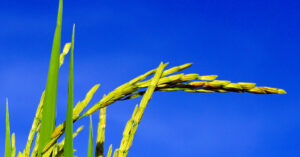
Reflecting on the [many] emerging leadership lessons from 2020, the one that really stands out above all others for me is this: the global pandemic is challenging leaders to go beyond what they should be doing to what they could be doing.
Why is this so powerful?
It’s compelling for many reasons. It demands a depth of personal insight and self-awareness that many leaders have not necessarily called upon previously in order to execute their roles. It requires a breadth of innovative problem-solving that requires collective and diverse thinking, not just one individual’s ‘lightbulb’ moment. It draws on the need for leaders to show their humanity and admit that they are, just like everyone else, anxious and worried at times, too. And it highlights once more that our tried and tested ways of leading are not fit for purpose anymore.
As leaders we need to unlearn some of things we’ve done in the past and develop new leadership habits such as becoming more curious, being passionate about experimentation, and developing our ability to be vigilant and more agile.
But, arguably over and above all this, the question of what we could be doing versus what we should be doing calls for us to care about each other, our communities and the planet. This is because the impact of not just what we do but how we do it and why, as well as the impact of our actions, is being magnified tenfold.
Now, more so than ever, the importance of ‘doing the right thing’, not just in the short term but for longer term business performance and sustainability, is under the spotlight and heavy scrutiny. At a time when many leaders may be reassessing their personal why, their own key priorities and core values, the demands being placed on them are exceptional and the levels of emotional agility required (the process that enables us to navigate life’s twists and turns with self-acceptance, clear-sightedness, and an open mind)[1] are extremely high.
We have to exercise and flex our moral muscle to care for one another
This means that, as leaders, we must take care of each other, and to care about our peers, our teams, our suppliers, our customers and wider society. We need to commit to admitting to ourselves, and to others, that it is only by acting collectively and caring about each other will we overcome the enormous challenges that we are facing, whether those are business and/or personal ones. Quite often, in leadership discussions we talk about the ability to connect our head and our heart when leading ourselves and others. However, even more often, we simply don’t walk that talk. Why not?
Because it forces us to face our own vulnerability and to show humility, and arguably even more critically, it increases the personal risk that our dignity[2], our sense of inherent value and self-worth, is violated by others. Now, as leaders, we need to step up and show up as whole human beings, to demonstrate that resilience and sustainability is built on kindness, on generosity of thought and action, and to invest in our own self-care.
Sowing the seeds for a new leadership model
As we enter this year of transition, of resetting and reinvention, of re-imagination and recovery, let’s not forget about our innate capacity for caring and being there for each other. As leaders we have to develop our ability to cultivate a sense of belonging, to activate and engage others on a shared purpose, and to give ourselves permission to use our hearts as well as our heads, so that we can face up to the new and emerging challenges that will inevitably come our way.
The year 2020 has given us an invaluable insight that we can all learn from if we choose to, one that we can use as a base to envision a better future and move on from: that leadership is about having courage, acting with integrity, and executing moral imagination[3], all sown from the seeds of our core values.
[1] David, Susan. Emotional Agility: Get Unstuck, Embrace Change, and Thrive in Work and Life. Avery, 2016.
[2] Hicks, Donna. Leading with Dignity. Yale University Press, 2018.
[3] Moral Imagination (accessed 6 January 2021).


